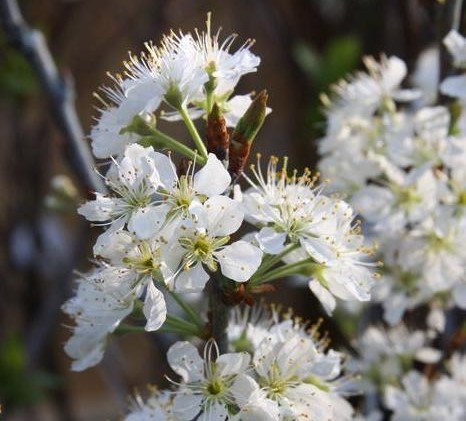
Recently, a visitor shared the observation that there was more pollen and allergies than ever before. This anecdotal observation got me thinking–maybe the recent dry warm weather was keeping the pollen in the air, rather than it seeping to the ground during rainstorms. A further thought, maybe the trees are taking advantage of the dry conditions to optimize their pollen dispersal? Certainly, the change in rainfall patterns, averages, and storm intensity are all affecting the plants around us, natural and cultivated.
The past few springs in New England have been dryer and warmer, causing farmers and gardeners alike to examine many of their stewardship practices. For many of these stewards of the land, historical success was based on patterns that required very little technology. Today, innovations in monitoring, tools, and so much more are necessary to adapt to unpredictable conditions.
While it is unlikely the Northeast will turn to desert, we may begin to experience longer periods of both dry and wet. Planting for resiliency means choosing the right plants and water storage systems for our landscapes. In Westport we can look to our sandy, rocky coasts for inspiration for drought tolerant native species to use in our home landscapes (see a list of 5 drought tolerant favorites, below).
All plants need consistent water when establishing, usually for the first year. Garden centers and nurseries sell plants when they look their best–in full flower and foliage–but this is also when the plant has the highest water requirements. Acquiring and planting trees, shrubs, and perennials when they are dormant (this means they have no leaves just buds or for perennials just roots) in early Spring or Late Fall will not only save water, but encourage better root growth. Storing water from downspouts in a rain barrel or underground cistern is a great way to not dry out the well or rack up the water bill. If pursuing a cistern I suggest a minimum of 1,000 gallons. The typical rain barrel is 50 gallons which is enough to water 1-2 small trees and with an 1” of rain about 1,000 gallons will dump off the average person’s roof. If dry conditions persist, every last drop of water will count!
5 Water Conservation Tips:
- When possible, shape garden beds and the structures around them to collect water that may run off your house, driveway, or other structures
- Give your plants a deep soaking when you plant them. This will help them get established and conserve water in the weeks ahead.
- Water your plants in the late evening when water won’t evaporate or scorch your plants
- Think ahead – simply monitoring weather patterns and watering accordingly is likely to save you water
- Invest in a rain barrel and conserve and reuse rainwater runoff!
5 Drought Tolerant Westport Natives:
- Ammophila breviligulata American Beachgrass
- Panicum virgatum Switchgrass
- Opuntia humifusa Eastern Prickly Pear
- Prunus maritima Beach Plum
- Nyssa sylvatica Black Tupelo
Wild Seed Project is an additional resource. Their booklets on trees, shrubs, and groundcovers offer a wealth of planting advice, including what to plant with your new natives!


